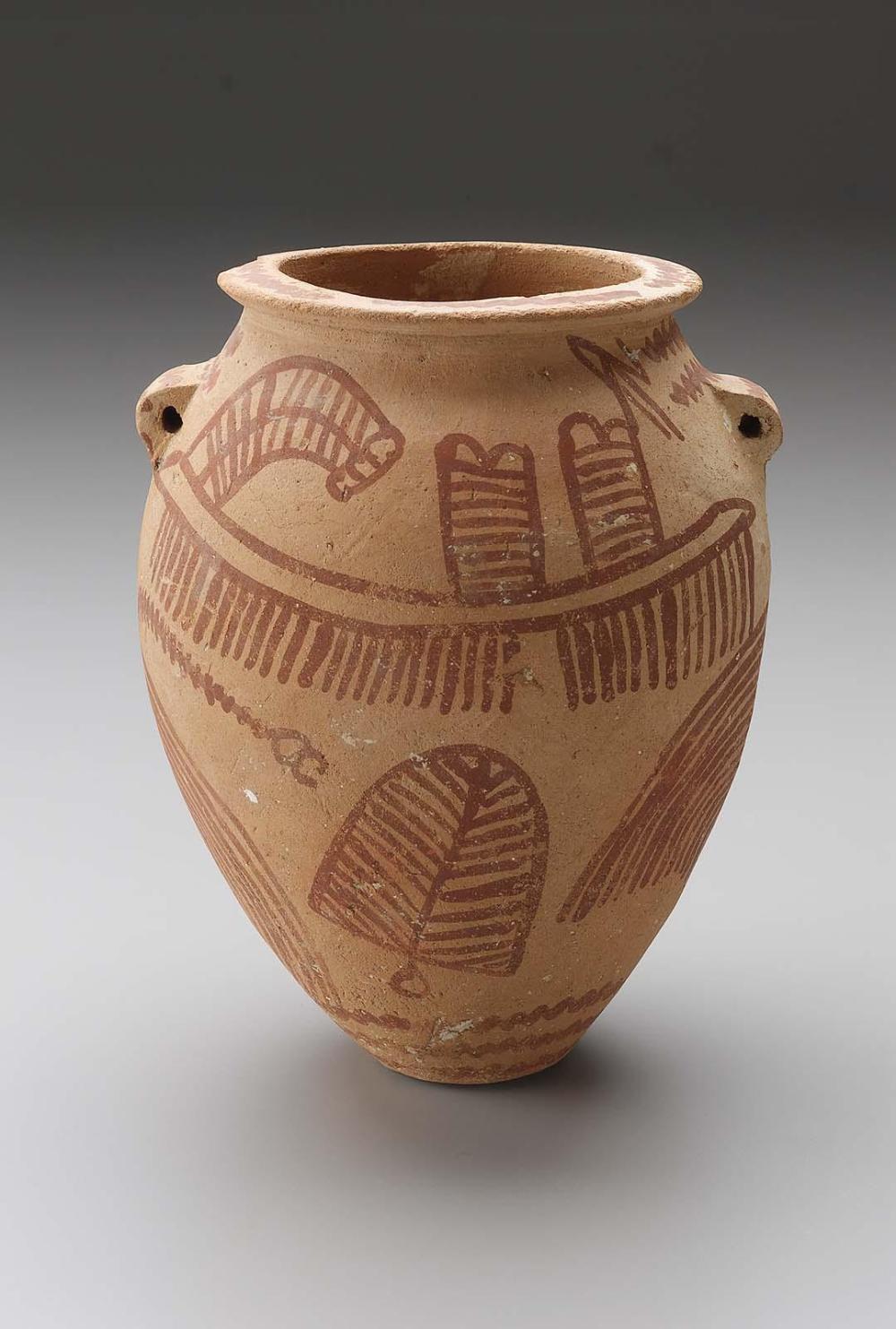Advanced Search 

Jar with painted boats
Egyptian
Predynastic Period
Naqada II (Gezean) 3650–3300 B.C.
Findspot: Egypt, Mesaid (Mesa'eed), Tomb 877
Medium/Technique
Pottery [Marl clay]
Dimensions
Height x diameter: 19.1 x 15.8 cm (7 1/2 x 6 1/4 in.)
Credit Line
Harvard University—Boston Museum of Fine Arts Expedition
Accession Number13.3952
CollectionsAncient Egypt, Nubia and the Near East
ClassificationsVessels
DescriptionThe second half of the Predynastic Period witnessed the emergence of one of ancient Egypt's most distinctive and beautiful pottery styles, known today as "decorated ware." This unusually large jar is one of the best examples of the type. Handmade of fine, buff clay, it features decoration in brownish red paint, an attractive contrast to the light beige background. Each side bears a narrative scene in which a long, narrow ship navigates through a river landscape, providing us with a glimpse of life on the Nile nearly half a millennium before Egypt's first king took the throne. The ships are equipped with two banks of multiple oars and a pair of cabins or portable shrines. Atop the first cabin is a pole bearing a standard and a pair of blowing streamers. These standards are a regular feature of early nautical scenes, and may have served as emblems - divine or tribal - or as indicators of the vessel's port of origin. Below the ship, atop wavy lines representing the water, is a series of large tropical plants, evoking the lush landscape of a marsh. Because pots decorated with boat scenes have been found almost exclusively in burial contexts, they may have served a ritual function, as processions by boat would play an important role in funerary iconography throughout Egyptian history. In later periods, they often represent the journey of the deceased to the afterlife. If these early scenes have the same significance, it would suggest that the Egyptians' conception of the afterlife as a riverine land (much like Egypt) had already been established by this early date.
ProvenanceFrom Mesaid (Mesa'eed) tomb 877 [M/877/2]. 1913: excavated by the Harvard University-Museum of Fine Arts Expedition; awarded to the MFA by the government of Egypt.
(Accession Date: December 4, 1913)
(Accession Date: December 4, 1913)
